As inflation continues and energy costs rise, utility bills are becoming more and more expensive. The obvious methods to cut back on those staggering expenses include turning off lights, setting your thermostat to an ideal temperature and showering instead of bathing. But there’s also an unexpected way you can slash the bill: using an air fryer instead of your oven.
While ovens aren’t the biggest energy suck in the home, they do guzzle natural gas and electricity, especially if you use them often and for long periods of time. Air fryer ovens are smaller and more energy-efficient than full-size ovens, and adding one to your kitchen can save you money if you use it regularly and bypass the big fella. If you’re wondering how much energy your gas oven or electric oven uses, we’ve calculated the costs and compared them to the cost of running an air fryer.
As a bonus, air fryers yield some of the fastest chicken wings, “fried” chicken, French fries and Brussels sprouts you’ll ever make at home without a deep fryer.
How much can an air fryer save you versus a full-size oven?
The answer won’t be the same for everyone since energy costs vary by state in the US. Oven efficiency also varies and newer models tend to use less gas or electricity. For this exercise, we’ll use some averages and estimates to assess how much you can potentially save if you fire up the air fryer instead of the oven. Oh, and saving money on energy is just one of many reasons we think air fryers are a worthwhile investment. More on that in a bit.
The easiest way to figure out how much an air fryer might save you versus a big oven is to calculate the wattage pulled per hour versus how much an electric stove would use. The same goes for a gas oven, although for that you’ll need to figure out the amount of natural gas used for a stove as well as the cost of natural gas in your state.
Don’t worry, we’ll make it easy.
Gas vs. electric ovens
Depending on what type of oven you have, gas or electric, operating cost will vary since natural gas prices and electricity costs vary rather dramatically by state and service provider. While both use a similar amount of energy and have somewhat similar upfront costs, if you own an older oven there’s a good chance it’s less energy-efficient than a newer model.
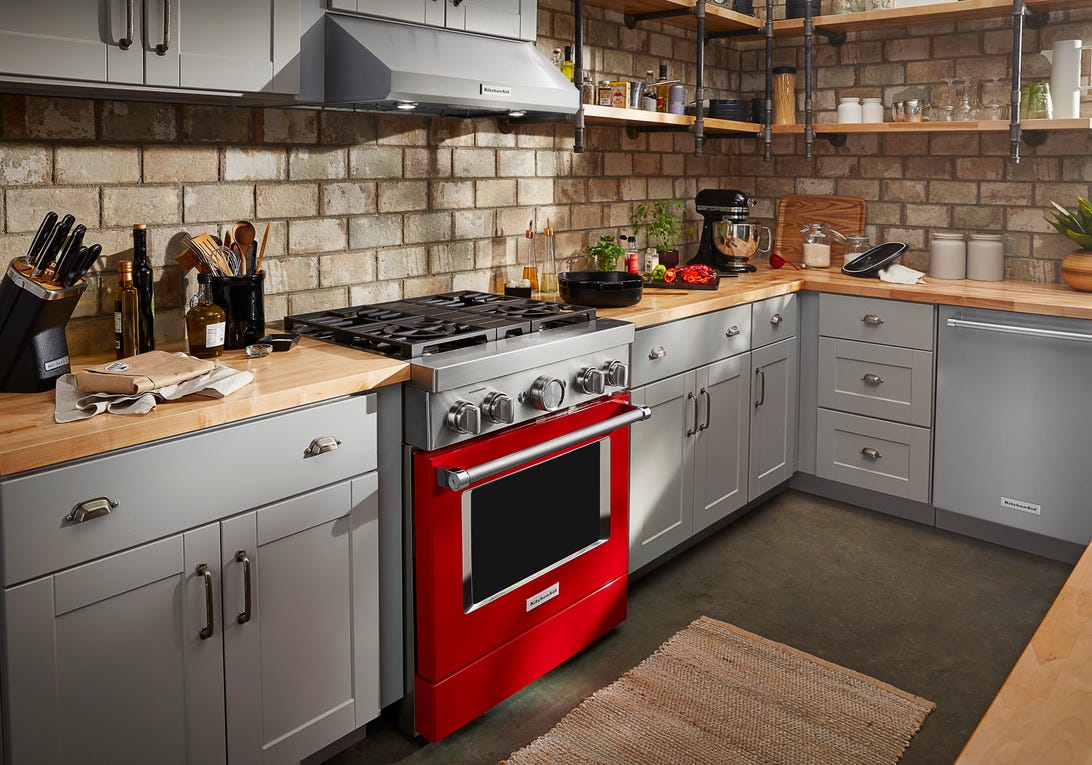
Modern ovens are more energy-efficient than they used to be. But few, if any, can beat an air fryer.
KitchenAid
How much does a gas stove cost to run?
To calculate the operating cost of your gas stove and oven, we take the energy rating of the oven in Btu and divide it by 100,000. Multiply the result by the cost per therm of natural gas in your state (varies greatly), then multiply by the number of hours the oven is used. You should be able to find the energy rating of your oven online if you know the model name or number. It is likely somewhere on the unit itself. If you still have the owner’s manual, you can find the energy rating there, measured in Btu.
To calculate the operating cost of an 18,000-Btu oven, you’ll divide 18,000 by 100,000, giving you 0.18. We’ll also need to find the average price per therm of natural gas in your state. This chart has the most recent prices via the US Energy Information Administration. Note that this chart is listed in dollars per thousand cubic feet, so you’ll need to divide by 10. For instance, if the chart price is $23, you’ll use $2.30 to calculate the cost.
In New York where I live, the price is currently $2.20 per therm (about average for the US). Next, we’ll multiply that price for a therm by the number you calculated in the last step (0.18 in this example) to get the operating cost per hour of using your gas oven.
For me, it would cost about 40 cents per hour to run an 18,000-Btu oven. If I were to run an oven for 1 hour per day, it would cost $146 per year. In some states (including Georgia, Florida and Ohio), natural gas is about 30% higher than the national average. In Hawaii, it’s more than double.
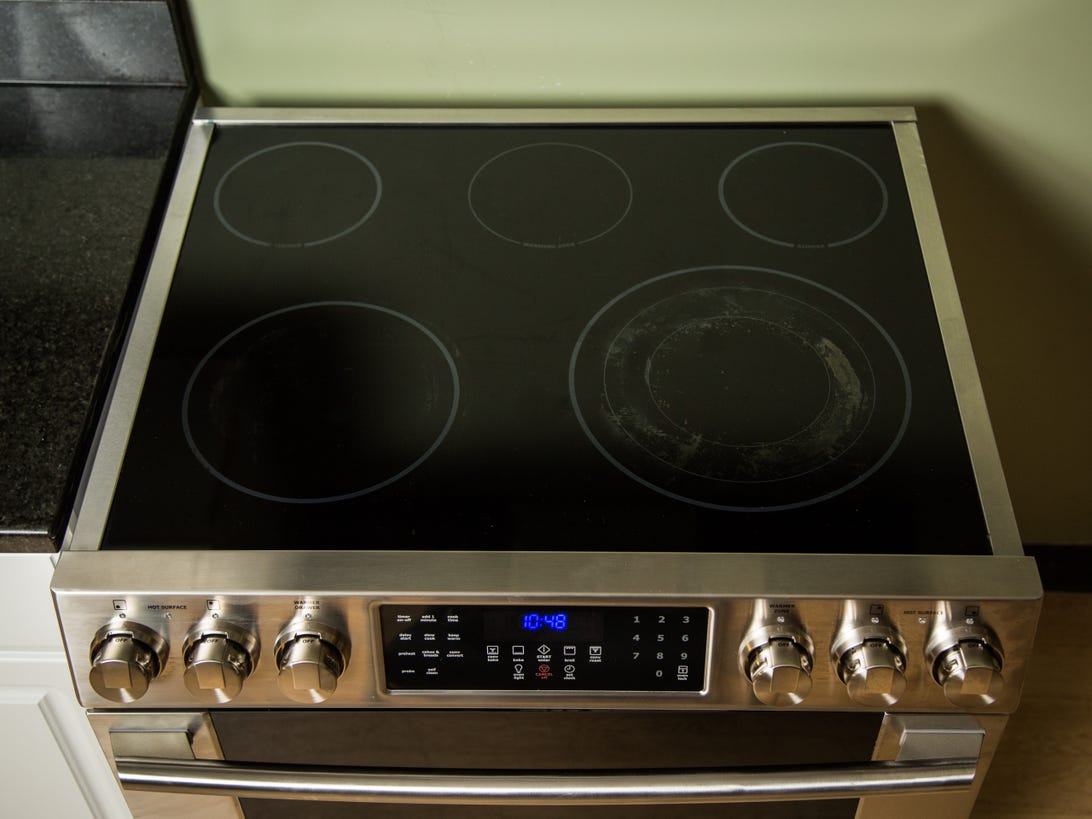
In New York, an electric oven costs about 50 cents an hour to run.
Chris Monroe/CNET
How much does an electric stove cost to run?
To determine electric stove consumption you’ll calculate the wattage pulled per hour of cooking. Most electric ovens draw around 3,000 watts, depending on the temperature. Once you find the wattage of your oven via the appliance tag, owner’s manual or an online product listing, multiply that by the number of hours you use the oven each day (we’ll use 1 hour for this calculation), then divide by 1,000 watts to find the kilowatt-hours (kWh) of electricity used.
Next, find the average price per kWh of electricity in your state. For that, you can consult this chart that has the 2020 prices listed in cents per kWh. The prices for 2021 won’t be released until December 2022, but if you do some web searching, you should be able to find the latest figures. Multiply that amount by the number you just calculated (3 kWh in this example) to determine your operating cost per day.
Working with New York’s current electricity rate of 17 cents per kWh, a 3,000-watt oven would cost about 51 cents per hour when run at high heat. If I used my oven for roughly 1 hour per day for one year that would equal roughly $182 per year. This cost doesn’t include energy used by the range and burners.
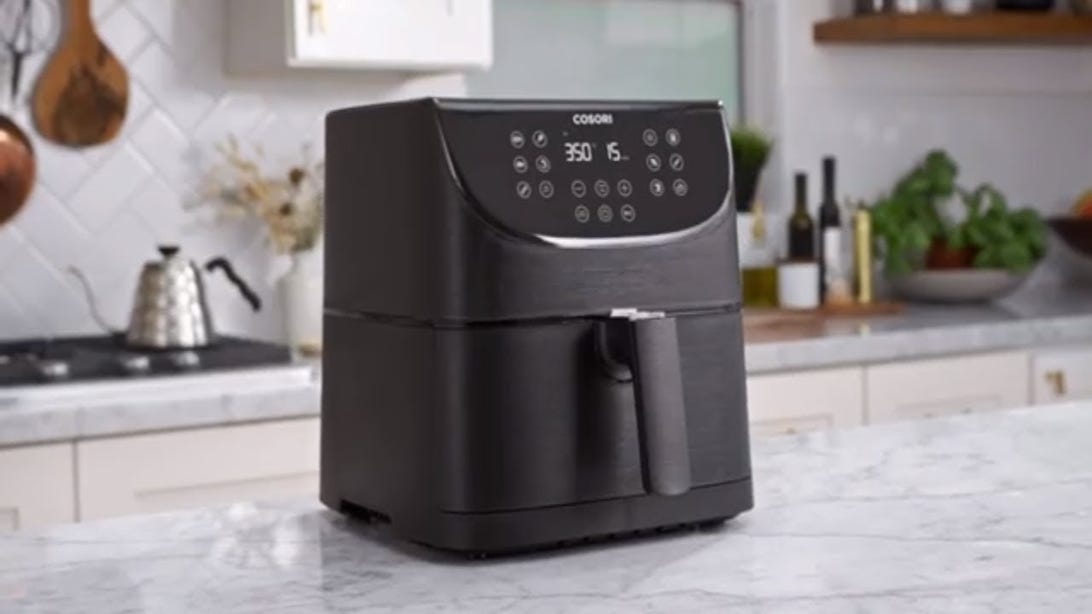
A standard 1,500-watt air fryer has both gas and electric ovens beat handily when it comes to energy efficiency.
Cosori
How much an air fryer costs to operate
Air fryers are electric appliances, so we can use the same methodology as above to find the operating cost. The wattage for air fryers varies and larger models will use more energy, but a standard 4-quart fryer such as this Ninja (our top-rated model) uses about 1,500 watts.
Considering that’s exactly half the wattage pull of the average full-size oven from our stove calculation, we can project that the air fryer will use roughly half as much electricity to operate.
Using New York’s electricity prices, we safely say a standard 4-quart air fryer will cost about 25 cents per hour to run. That’s 50% more energy-efficient than the average full-size electric oven and about 35% more efficient than the average gas oven (calculated with New York state’s average energy costs).
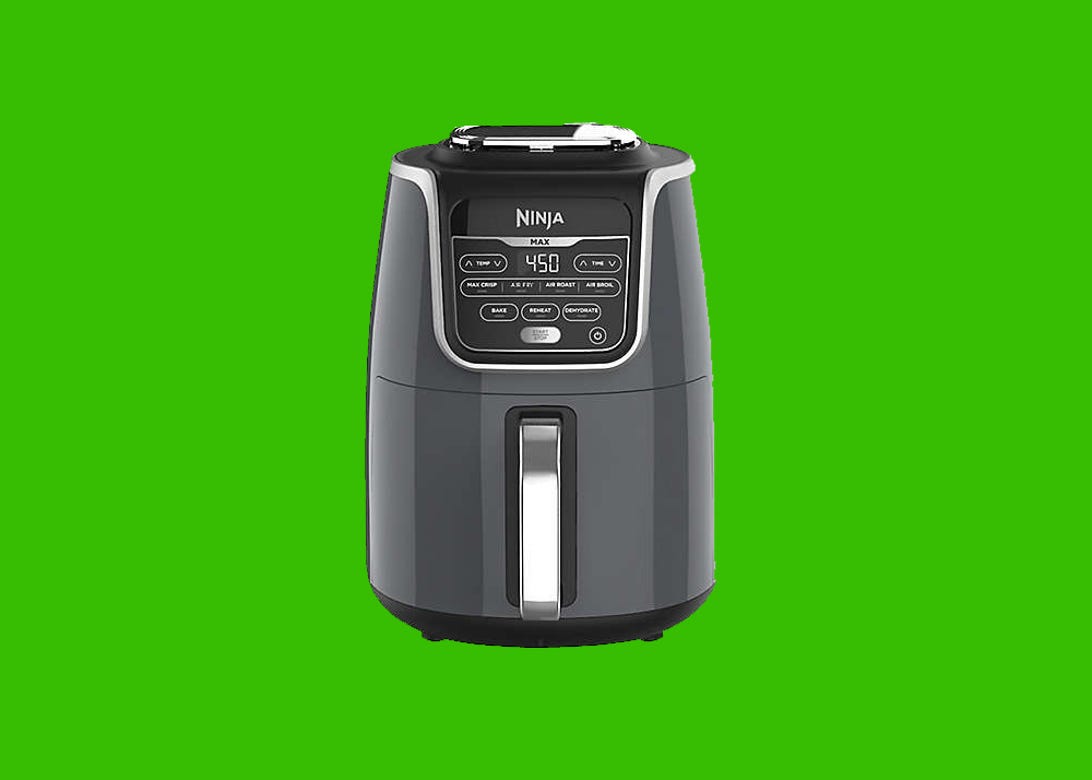
Ninja’s 4-quart air fryer oven is one of the best we’ve tested.
CNET/Ninja
But that’s only half of the equation. Air fryers are even more energy- and cost-efficient than these raw numbers illustrate.
Here’s why…
Air fryers cook food much faster than standard ovens
Because of the smaller cooking chamber and superconvection (intense fan blowing heat into food), air fryers generally cook foods much faster than your traditional gas or electric stove. Often in about half the time it takes to make a similar recipe in a full oven.
Below are some examples of cooking times for air fryer versus stove. The cooking website Taste of Home compiled a list of average air fryer cooking times for popular foods. We compared those with standard cooking times pulled from Food Network recipes for oven-baked or oven-roasted versions of those foods.
Air fryer versus oven
| Food | Temperature | Air fryer cooking time (mins) | Oven cooking time with preheat (mins) |
|---|---|---|---|
| Chicken thighs | 400 F | 20-25 | 40 |
| Chicken wings | 375 F | 10-12 | 40 |
| Chicken breast | 375 F | 23 | 30 |
| Salmon | 400 F | 5-7 | 12-15 |
| Brussels sprouts | 350 F | 15-18 | 40 |
| Bacon | 400 F | 5-10 | 20 |
| Cauliflower | 400 F | 10-12 | 20 |
| French fries (from scratch) | 400 F | 10-20 | 40-45 |
| French fries (frozen) | 400 F | 6-8 | 18-20 |
Air fryers also don’t need to preheat
Don’t forget most air fryers also don’t require any preheating time, making them even more efficient. The average full-size oven takes at least 10 minutes to preheat but usually more like 12 to 15 minutes. Preheating requires as much (or more) energy as actual cooking. In the chart above, I added a modest 10 minutes to each of the oven cooking times to account for preheating.
If you consider that an air fryer does the work of an oven in half the time (even faster when you include preheat time), 300 hours of cooking in a standard oven over the course of a year would likely take fewer than 150 hours when done in an air fryer.

Chicken wings made in an air fryer are extremely tasty and cook in half the time.
Brian Bennett/CNET
So how much can you save using an air fryer?
- Cost of 300 hours of cooking with a gas oven on high heat: $153
- Cost of 300 hours of cooking with an electric oven on high heat: $120
- Cost of 150 hours of cooking with an air fryer: $39
These numbers are a rough estimate, of course. The numbers will vary based on your state’s energy cost, how much cooking you do in the course of a year, what temperature you’re cooking at and the type and size of oven you’re using.
Read more: The 5 Best Air Fryers for 2022
Before we get carried away…
An air fryer is not a pound-for-pound replacement of an oven. There are plenty of foods that you probably won’t want to cook in an air fryer. Others just plain won’t fit in a standard air fryer. Certain models are spacious enough to cook a whole chicken, but for larger roasts, a Thanksgiving turkey or that Sunday lasagna — not to mention most baking projects — your air fryer may not be the best option.
That said, for someone who doesn’t bake much or cook whole turkeys and racks of lamb on the regular, an air fryer can shoulder a whole lot of the cooking that your more expensive, less energy-efficient oven has been handling.

Don’t throw your big oven away just yet. You’ll still want it to cook that Sunday lasagna and a turkey on Thanksgiving.
mphillips007/E+/Getty Images
Saving money is nice, but that’s not the best reason to air-fry
An air fryer won’t cook everything better than your oven, but there are some air fryer foods that a big oven can’t touch. Because air fryers cook so fast and at high temps, foods like chicken wings, french fries and most frozen apps will get crispy on the outside without drying out on the inside the way they might when stuck in the large oven for 30 or 40 minutes.
As mentioned, air fryers don’t require any preheating time either. Most of the models I’ve used are also extremely simple to operate, safe even for children to use and easy to clean.
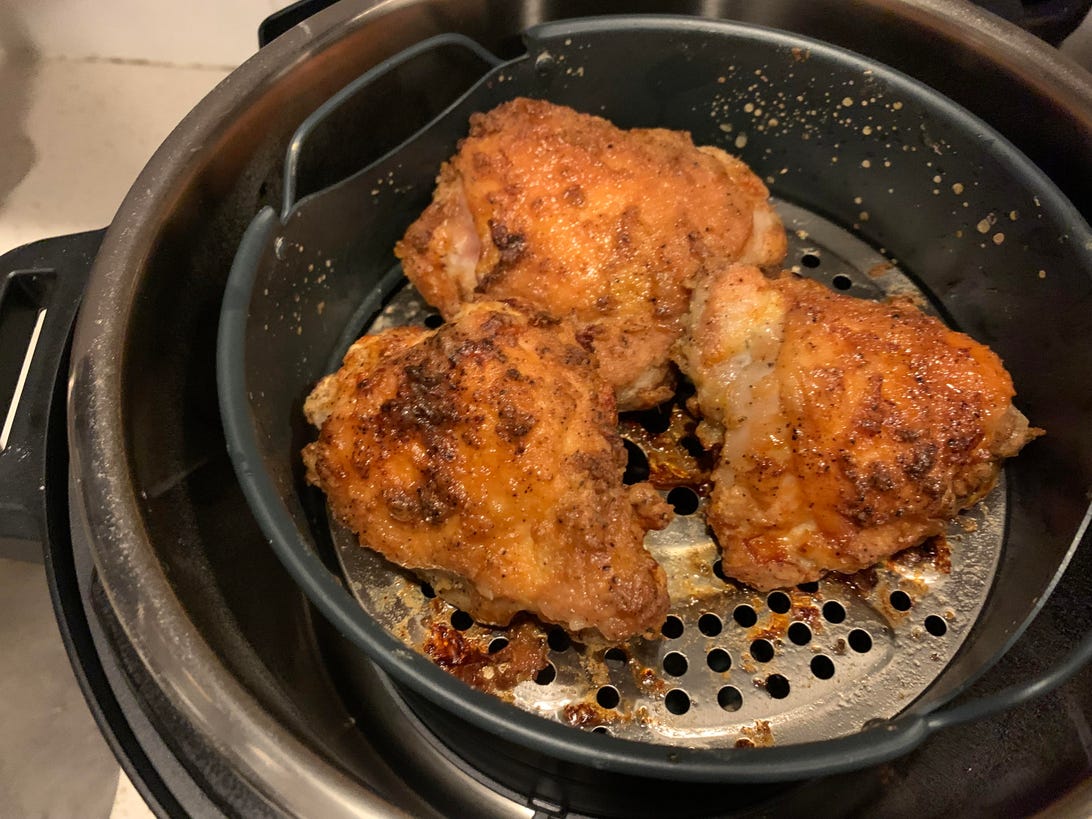
The Instant Pot air fryer lid turned out some excellent fried chicken in about 20 minutes. Can your big oven do that?
David Watsky/CNET
Bonus: Air fryers are cheap
You can pay in the hundreds for an air fryer but many of the best ones we tested are less than that. You can pick up our favorite air fryer, the Ninja 4-quart, for $100, or cheaper if you find it on sale. And our favorite budget air fryer, the Gourmia 4-quart, can be found for just $60.